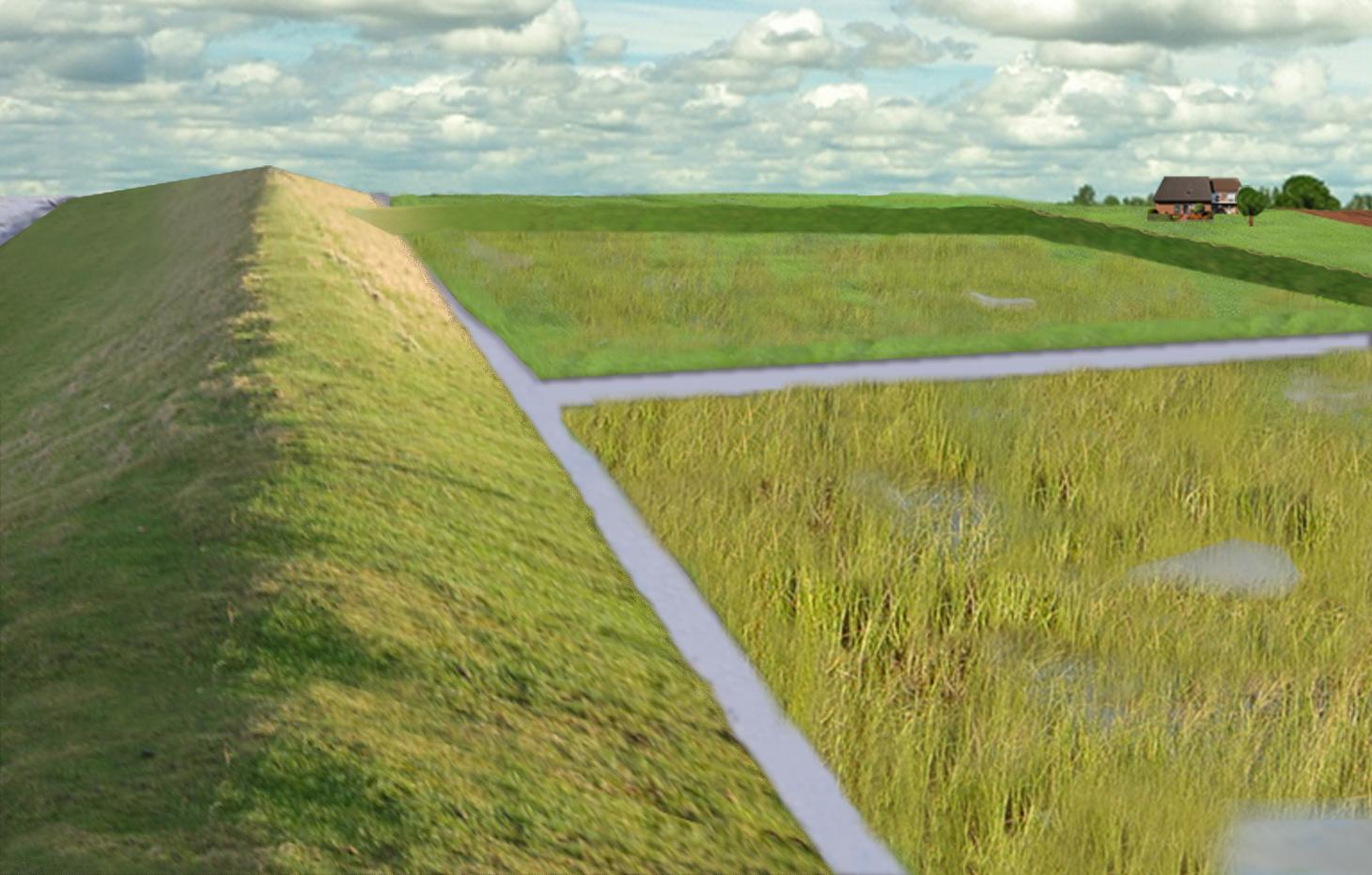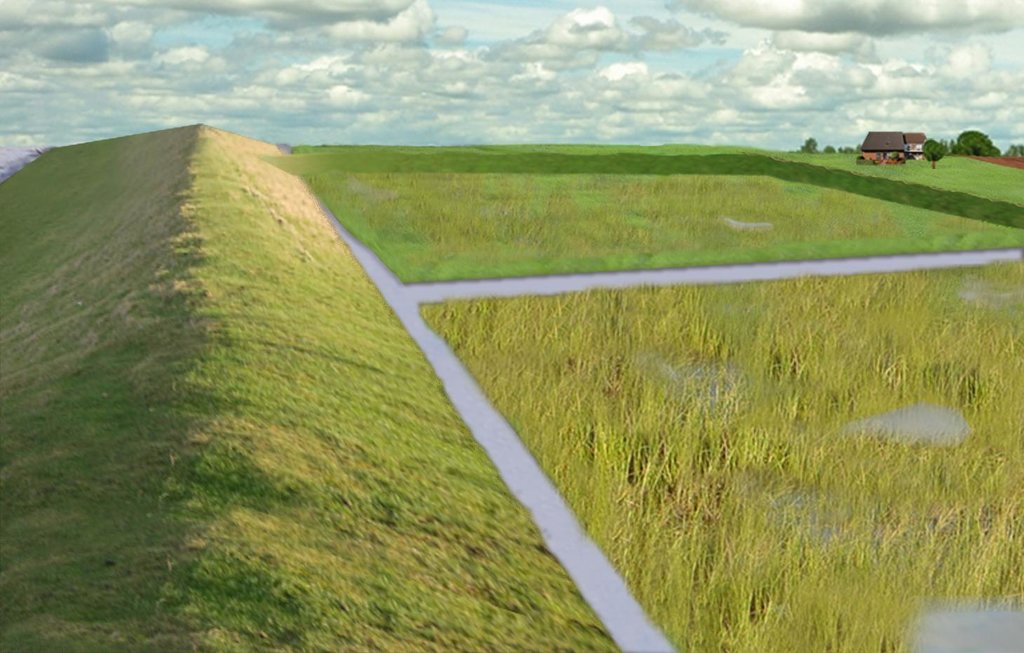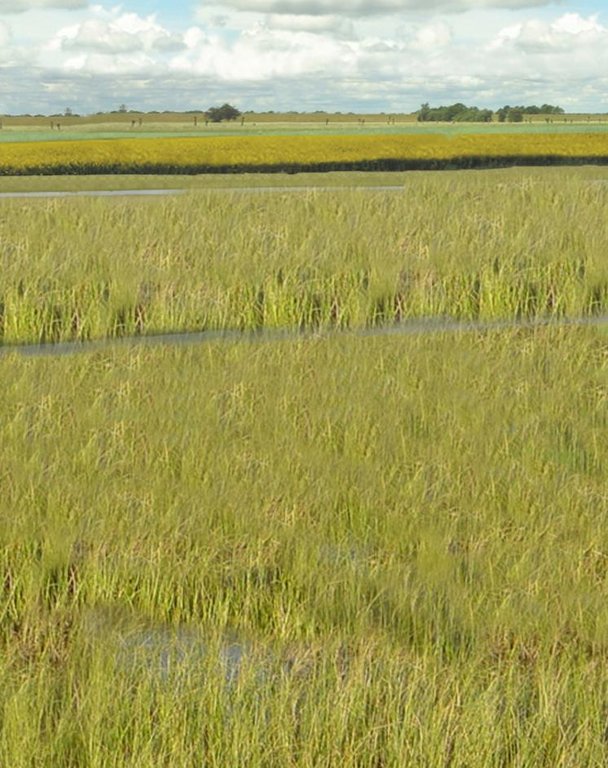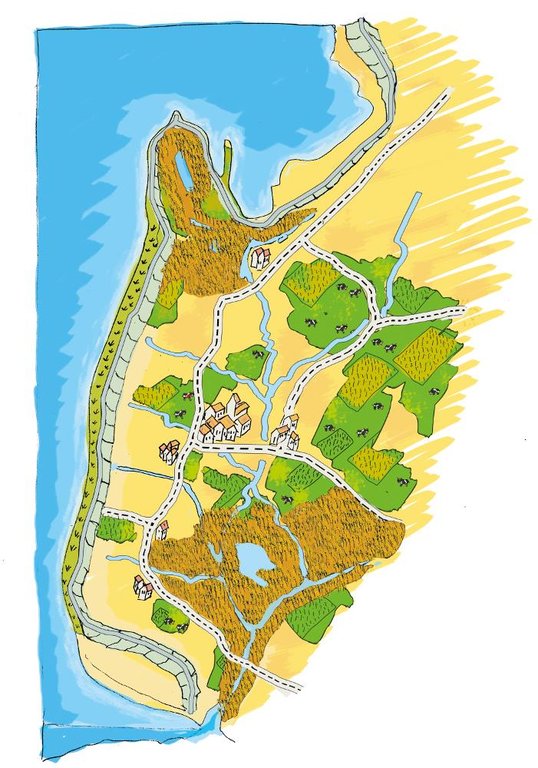Water retention polders without agriculture to improve water management [Allemagne]
- Création :
- Mise à jour :
- Compilateur : Martin Maier
- Rédacteur : –
- Examinateurs : Fabian Ottiger, David Streiff
Ungenutzter Polder zur Verbesserung des Wassermanagements (Nordsee Region)
technologies_1582 - Allemagne
- Résumé complet en PDF
- Résumé complet en PDF pour impression
- Résumé complet dans le navigateur
- Résumé complet (non formaté)
- Water retention polders without agriculture to improve water management: 8 mars 2017 (inactive)
- Water retention polders without agriculture to improve water management: 8 mars 2017 (inactive)
- Water retention polders without agriculture to improve water management: 29 avril 2017 (inactive)
- Water retention polders without agriculture to improve water management: 1 avril 2019 (public)
Voir les sections
Développer tout Réduire tout1. Informations générales
1.2 Coordonnées des personnes-ressources et des institutions impliquées dans l'évaluation et la documentation de la Technologie
Personne(s)-ressource(s) clé(s)
Spécialiste GDT:
Kleyer Michael
+49 441 7980
michael.kleyer@uni-oldenburg.de
University of Oldenburg
Ammerländer Heerstraße 114, 26129 Oldenburg, Germany
Allemagne
Spécialiste GDT:
Karrasch Leena
University of Oldenburg
Ammerländer Heerstraße 114, 26129 Oldenburg, Germany
Allemagne
Spécialiste GDT:
Mayer Martin
+49 441 798 3075
martin.maier@uni-oldenburg.de
University of Oldenburg
Ammerländer Heerstraße 114, 26129 Oldenburg, Germany
Nom du projet qui a facilité la documentation/ l'évaluation de la Technologie (si pertinent)
Book project: Making sense of research for sustainable land management (GLUES)Nom du projet qui a facilité la documentation/ l'évaluation de la Technologie (si pertinent)
Sustainable Coastal Land Management (COMTESS / GLUES)Nom du ou des institutions qui ont facilité la documentation/ l'évaluation de la Technologie (si pertinent)
University of Oldenburg (University of Oldenburg) - Allemagne1.3 Conditions relatives à l'utilisation par WOCAT des données documentées
Quand les données ont-elles été compilées (sur le terrain)?
09/06/2015
Le compilateur et la(les) personne(s) ressource(s) acceptent les conditions relatives à l'utilisation par WOCAT des données documentées:
Oui
1.5 Référence au(x) questionnaire(s) sur les Approches de GDT
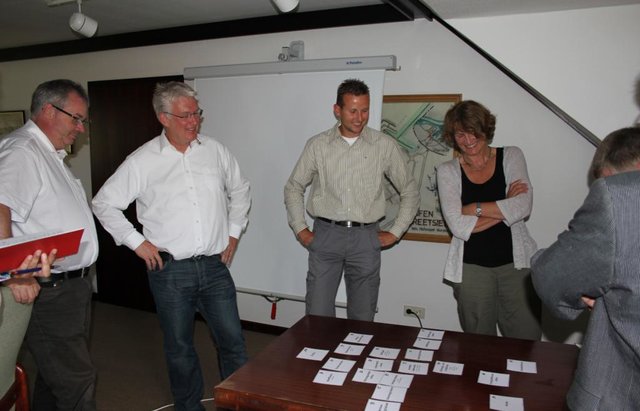
Stakeholder participation in integrated assessment and planning of … [Allemagne]
Stakeholders have been involved in integrated assessment to develop action-oriented land use options addressing possible climate change adaptation measures as alternatives to traditional coastal protection strategies.
- Compilateur : Martin Maier
2. Description de la Technologie de GDT
2.1 Courte description de la Technologie
Définition de la Technologie:
Water retention polders to reduce flood risk due to heavy rainfall or runoff at high tide in coastal lowlands. The retention polders are used to accumulate organic material for climate change mitigation and enable development of undisturbed natural habitats, rather than for agriculture.
2.2 Description détaillée de la Technologie
Description:
In the 19th and 20th century land was reclaimed from the sea to make use of the exposed fertile soils for agriculture through a process known as ‘impoldering’. The reclaimed land is now characterized by intensive grazing and cropland. This is a region where agriculture is the most important form of land use. However, the land needs to be regularly drained. Given the expected increase in precipitation in winter due to climate change, the corresponding increase in freshwater discharge needs to be managed. Furthermore, the periods when natural discharge into the sea oc-curs are likely to decrease – because of rising sea levels also caused by climate change. Consequently, in winter and spring, greater quantities of freshwater will need to be pumped into the sea rather than discharged naturally at the low or ‘ebb’ tide. Specially embanked water retention polders will be required to temporarily impound water as part of a multifunctional approach to coastal zone management.
Purpose of the Technology: These retention polders could be a cost-effective alternative to expensive invest-ments in extra pumping capacities to prevent submergence of low-lying cultivated areas. The primary aim is to restrict floods to the retention polders when the drain-age network is overburdened and cannot deal with the predicted extra demands in the future. The high evapotranspiration from the open waterbody, and the reeds growing within, will also help with reducing the amount of water. During dry sum-mers, the water in the retention polder could also be put to creative use as a source of irrigation. Another potential advantage is that subsurface saltwater intrusion in the region could be prevented by the freshwater-filled polders. During extreme storm surges and in the rare case of breaches in the sea wall, the retention polders would serve as an extra line of defence by holding seawater.
Establishment / maintenance activities and inputs: An embankment enclosing approx. 3,000 ha will be able to store up to 25,000,000 m³ water. This will improve the drainage of an area of approx. 49,000 ha. The invest-ment for building this water retention area is high – but for the reasons stated it serves a necessary purpose at a cost which is lower than the alternative – increased pumped drainage installations. Maintenance costs will be lower than the drainage alternative as only the integrity of the embankment needs to be monitored regularly. However within the proposed retention polders – the areas enclosed by the em-bankment - no agricultural activity will take place. This will lead to a change from the current intensive grazing for dairy farming and cropland to non-agricultural use. And therefore a development towards swamps, reed stands and open waters will take place. It is expected that a development to undisturbed natural habitats will increase the number of endangered species. There will be an accumulation of or-ganic material (and organic carbon) in the form of peat due to the wet conditions within the retention polders. Carbon will be sequestered by plant growth and thus reduce the amount of CO2 in the atmosphere. The natural regeneration within the embanked areas will be attractive for tourism and recreation, which should provide an opportunity for additional income generation for the local population.
2.3 Photos de la Technologie
2.5 Pays/ région/ lieux où la Technologie a été appliquée et qui sont couverts par cette évaluation
Pays:
Allemagne
Région/ Etat/ Province:
Germany, Lower Saxony
Autres spécifications du lieu:
Landkreis Aurich
Map
×2.6 Date de mise en œuvre de la Technologie
Si l'année précise est inconnue, indiquez la date approximative: :
- il y a entre 10-50 ans
2.7 Introduction de la Technologie
Spécifiez comment la Technologie a été introduite: :
- au cours d'expérimentations / de recherches
- par le biais de projets/ d'interventions extérieures
3. Classification de la Technologie de GDT
3.2 Type(s) actuel(s) d'utilisation des terres, là où la Technologie est appliquée

Pâturages
Pâturage intensif/ production fourragère :
- Affouragement en vert/ zéro-pâturage
- Prairies améliorées
Principales espèces animales et principaux produits:
Main species improved pasture: Cattle for milk and meat
Main species cut and carry/ zero grazing: cows for milk

Mixte (cultures/ pâturages/ arbres), incluant l'agroforesterie
- Agro-pastoralisme
Principaux produits/ services:
Major cash crop annual cropping: Corn
Major food crop annual cropping: Wheat and barley
Commentaires:
Major land use problems (compiler’s opinion): Flood events and droughts may substantially disrupt the current land use system in the future and lead to higher drainage costs and higher economic risks for agricultural production. This will reduce the ecological and economic viability of the current intensive and highly productive land use under a changing climate.
Major land use problems (land users’ perception): There is no awareness of risks due to climate change.
Future (final) land use (after implementation of SLM Technology): Other: Oo: Other: wastelands, deserts, glaciers, swamps, recreation areas, etc
Constraints of infrastructure network (roads, railways, pipe lines, power lines): needs to be adapted to regular flooding
Constraints of recreation (landscape is used for reacreation and tourism): change in landscape due to retention area
Constraints of nature conservation areas (protected sites): wetter conditions in retention area
Si l'utilisation des terres a changé en raison de la mise en œuvre de la Technologie, indiquez l'utilisation des terres avant la mise en œuvre de la Technologie:
Mixed: Mp: Agro-pastoralism
3.3 Informations complémentaires sur l'utilisation des terres
Commentaires:
Water supply: rainfed, mixed rainfed - irrigated
Nombre de période de croissance par an: :
- 1
Précisez:
Longest growing period in days: 240 Longest growing period from month to month: March to October
Densité d'élevage/ chargement (si pertinent):
> 100 LU /km2
3.4 Groupe de GDT auquel appartient la Technologie
- gestion des eaux de surface (sources, rivières, lacs, mers)
- gestion/ protection des zones humides
- Flood prevention
3.5 Diffusion de la Technologie
Commentaires:
Total area covered by the SLM Technology is 33.7 m2.
3.6 Mesures de GDT constituant la Technologie

structures physiques
- S5: Barrages/retenues, micro-bassins, étangs

modes de gestion
- M1: Changement du type d’utilisation des terres
- M2: Changement du niveau de gestion / d'intensification
Commentaires:
Main measures: structural measures
Secondary measures: management measures
3.7 Principaux types de dégradation des terres traités par la Technologie

dégradation chimique des sols
- Cs: salinisation/ alcalinisation

dégradation hydrique
- Hs: changement de la quantité d’eau de surface
- Hg: changement du niveau des nappes phréatiques (eaux souterraines) et des aquifères
- Hq: baisse de la qualité des eaux souterraines
Commentaires:
Main type of degradation addressed: Hs: change in quantity of surface water
Secondary types of degradation addressed: Cs: salinisation / alkalinisation, Hg: change in groundwater / aquifer level, Hq: decline of groundwater quality
Main causes of degradation: change of seasonal rainfall (Climate change, higher rainfall in winter, lower in summer), Heavy / extreme rainfall (intensity/amounts) (Heavy rainfall in winter due to climate change expected), floods (Flooding due to heavy rainfall in winter)
Secondary causes of degradation: droughts (Droughts due to less rainfall in summer (climate change)), other natural causes (avalanches, volcanic eruptions, mud flows, highly susceptible natural resources, extreme topography, etc.) specify (Sea level rise)
3.8 Prévention, réduction de la dégradation ou réhabilitation des terres dégradées
Spécifiez l'objectif de la Technologie au regard de la dégradation des terres:
- prévenir la dégradation des terres
- réduire la dégradation des terres
Commentaires:
Main goals: prevention of land degradation
Secondary goals: mitigation / reduction of land degradation
4. Spécifications techniques, activités, intrants et coûts de mise en œuvre
4.1 Dessin technique de la Technologie
4.2 Spécification/ explications techniques du dessin technique
The figure shows the study region, located on the North Sea coast. The whole area is protected by a sea wall (grey). Crop fields (yellow), grasslands (green) and the drainage system (light blue) char-acterize the region. Large water bodies (blue) sur-rounded by reeds (brown) act as water retention polders. Vegetative regeneration, build-up of peat and re-establishment of natural habitats occurs within the retention polders. The land around the retention polders (the higher parts of the land-scape) profits from the retention areas as the risk of flooding is reduced and can be used for cropland and intensive grazing. Depending on the size of the retention area a huge amount of excess water can be contained. Retention areas of 3,000 ha are able to store up to 25,000,000 m³ water. The height of the dams depends on the elevation of the landscape but in general a height of less than 2 m is sufficient.
Location: Krummhörn. County of Aurich, Lower Saxony
Technical knowledge required for field staff / advisors: high (To generate income in the retention area (without existing agricultural methods))
Technical knowledge required for Water board: high (To build a new adapted drainage system with retention areas)
Main technical functions: control of dispersed runoff: retain / trap, control of concentrated runoff: retain / trap
Secondary technical functions: increase in organic matter, increase / maintain water stored in soil, increase of groundwater level / recharge of groundwater
Dam/ pan/ pond
Height of bunds/banks/others (m): 1
Width of bunds/banks/others (m): 2
Length of bunds/banks/others (m): 30000
Construction material (earth): sand core and clay cover
Specification of dams/ pans/ ponds: Capacity 25000000m3
Catchment area: 49000ham2
Beneficial area: 49000ham2
Other specifications: size of retention area (embanked area): 3,000.00 ha
Change of land use type: The former pastures and crop fields will not be used any more. Cessation of land use will take place.
Change of land use practices / intensity level: No more agricultural land use within the retention areas. The wetter conditions will lead to peat accumulation
4.3 Informations générales sur le calcul des intrants et des coûts
autre/ monnaie nationale (précisez):
Euro
Indiquer le taux de change du dollars en monnaie locale (si pertinent): 1 USD= :
0,94
Indiquez le coût salarial moyen de la main d'œuvre par jour:
100.00
4.4 Activités de mise en place/ d'établissement
| Activité | Type de mesures | Calendrier | |
|---|---|---|---|
| 1. | Building of dams | Structurel | during winter months |
4.5 Coûts et intrants nécessaires à la mise en place
| Spécifiez les intrants | Unité | Quantité | Coûts par unité | Coût total par intrant | % des coût supporté par les exploitants des terres | |
|---|---|---|---|---|---|---|
| Main d'œuvre | Labour | Dam | 1,0 | 21000000,0 | 21000000,0 | |
| Equipements | Machine use | Dam | 1,0 | 9000000,0 | 9000000,0 | |
| Matériaux de construction | Earth | Dam | 1,0 | 750000,0 | 750000,0 | |
| Coût total de mise en place de la Technologie | 30750000,0 | |||||
Commentaires:
Duration of establishment phase: 3 month(s)
4.6 Activités d'entretien/ récurrentes
| Activité | Type de mesures | Calendrier/ fréquence | |
|---|---|---|---|
| 1. | Control of dams | Structurel | once a year |
| 2. | Maintenance of dams | Structurel | once a year |
| 3. | Maintanance of drainage system | Structurel | once a year |
4.7 Coûts et intrants nécessaires aux activités d'entretien/ récurrentes (par an)
| Spécifiez les intrants | Unité | Quantité | Coûts par unité | Coût total par intrant | % des coût supporté par les exploitants des terres | |
|---|---|---|---|---|---|---|
| Main d'œuvre | Labour | Dam | 1,0 | 800,0 | 800,0 | |
| Equipements | Machine use | Dam | 1,0 | 300,0 | 300,0 | |
| Matériaux de construction | Earth | Dam | 1,0 | 100,0 | 100,0 | 1,0 |
| Autre | Maintenance per km ditch | Dam | 1,0 | 2270,7 | 2270,7 | |
| Coût total d'entretien de la Technologie | 3470,7 | |||||
Commentaires:
Machinery/ tools: digger, open truck
The main investment is based on a dam length of 30 km to build up the retention area of a size of 3 000 ha. The length of the drainage network for the whole watershed is 1,074 km. Within the retention area no maintenance of the drainage network is necessary as there is no agricultural land use and drainage is not maintained any more. Maintenance costs of drainage network are based on long term annual mean cost of 2,270.72 Euro per km including pumping costs.
4.8 Facteurs les plus importants affectant les coûts
Décrivez les facteurs les plus importants affectant les coûts :
The establishment costs are for the whole retention area (3 000 ha). The establishment period will be half a year.
Mainly the elevation in the region determines the costs as the height of the dams depend on the elevation. Typical heights are 1 m up to 2 m with a slope of 1:3.
5. Environnement naturel et humain
5.1 Climat
Précipitations annuelles
- < 250 mm
- 251-500 mm
- 501-750 mm
- 751-1000 mm
- 1001-1500 mm
- 1501-2000 mm
- 2001-3000 mm
- 3001-4000 mm
- > 4000 mm
Zone agro-climatique
- humide
Thermal climate class: temperate
5.2 Topographie
Pentes moyennes:
- plat (0-2 %)
- faible (3-5%)
- modéré (6-10%)
- onduleux (11-15%)
- vallonné (16-30%)
- raide (31-60%)
- très raide (>60%)
Reliefs:
- plateaux/ plaines
- crêtes
- flancs/ pentes de montagne
- flancs/ pentes de colline
- piémonts/ glacis (bas de pente)
- fonds de vallée/bas-fonds
Zones altitudinales:
- 0-100 m
- 101-500 m
- 501-1000 m
- 1001-1500 m
- 1501-2000 m
- 2001-2500 m
- 2501-3000 m
- 3001-4000 m
- > 4000 m
5.3 Sols
Profondeur moyenne du sol:
- très superficiel (0-20 cm)
- superficiel (21-50 cm)
- modérément profond (51-80 cm)
- profond (81-120 cm)
- très profond (>120 cm)
Texture du sol (de la couche arable):
- fin/ lourd (argile)
Matière organique de la couche arable:
- abondant (>3%)
Si disponible, joignez une description complète du sol ou précisez les informations disponibles, par ex., type de sol, pH/ acidité du sol, capacité d'échange cationique, azote, salinité, etc.
Soil fertiliuty is high
Soil drainage/infiltration is medium
Soil water storage capacity is high
5.4 Disponibilité et qualité de l'eau
Profondeur estimée de l’eau dans le sol:
< 5 m
Disponibilité de l’eau de surface:
bonne
Qualité de l’eau (non traitée):
uniquement pour usage agricole (irrigation)
5.5 Biodiversité
Diversité des espèces:
- faible
5.6 Caractéristiques des exploitants des terres appliquant la Technologie
Orientation du système de production:
- commercial/ de marché
Revenus hors exploitation:
- 10-50% de tous les revenus
Niveau relatif de richesse:
- moyen
Individus ou groupes:
- employé (entreprise, gouvernement)
Niveau de mécanisation:
- mécanisé/ motorisé
Genre:
- femmes
- hommes
Indiquez toute autre caractéristique pertinente des exploitants des terres:
Land users applying the Technology are mainly common / average land users
Population density: 50-100 persons/km2
Annual population growth: < 0.5%
1% of the land users are very rich and own 1% of the land.
50% of the land users are rich and own 24% of the land.
50% of the land users are average wealthy and own 50% of the land.
and own 25% of the land.
Off-farm income specification: Many farmers do additional work in industry or servicing sector
5.7 Superficie moyenne des terres détenues ou louées par les exploitants appliquant la Technologie
- < 0,5 ha
- 0,5-1 ha
- 1-2 ha
- 2-5 ha
- 5-15 ha
- 15-50 ha
- 50-100 ha
- 100-500 ha
- 500-1 000 ha
- 1 000-10 000 ha
- > 10 000 ha
Cette superficie est-elle considérée comme de petite, moyenne ou grande dimension (en se référant au contexte local)?
- grande dimension
Commentaires:
Average area of land owned or leased by land users applying the Technology: 5-15 ha, 15-50 ha, 50-100 ha, 50-100 ha, 100-500 ha
5.8 Propriété foncière, droits d’utilisation des terres et de l'eau
Propriété foncière:
- individu, sans titre de propriété
Droits d’utilisation des terres:
- individuel
5.9 Accès aux services et aux infrastructures
santé:
- pauvre
- modéré
- bonne
éducation:
- pauvre
- modéré
- bonne
assistance technique:
- pauvre
- modéré
- bonne
emploi (par ex. hors exploitation):
- pauvre
- modéré
- bonne
marchés:
- pauvre
- modéré
- bonne
énergie:
- pauvre
- modéré
- bonne
routes et transports:
- pauvre
- modéré
- bonne
eau potable et assainissement:
- pauvre
- modéré
- bonne
services financiers:
- pauvre
- modéré
- bonne
6. Impacts et conclusions
6.1 Impacts sur site que la Technologie a montrés
Impacts socio-économiques
Production
production agricole
Commentaires/ spécifiez:
No agricultural land use in the retention area any more.
production fourragère
Commentaires/ spécifiez:
No agricultural land use in the retention area any more.
Revenus et coûts
revenus agricoles
Autres impacts socio-économiques
Intrusion by saline groundwater
Impacts socioculturels
possibilités de loisirs
Commentaires/ spécifiez:
Diversification of landscape by building the retention area will increase the attractivity for recreation and tourists.
connaissances sur la GDT/ dégradation des terres
Commentaires/ spécifiez:
No agricultural land use under wet conditions results in more diversity and conservation of regional species and habitats.
Improved livelihoods and human well-being
Commentaires/ spécifiez:
'Regional belonging' and 'feeling of safety' are measured. The amount of increase is modelled and will be added here.
Impacts écologiques
Cycle de l'eau/ ruissellement
quantité d'eau
Commentaires/ spécifiez:
Typical for the region are wet situations. These typical wet conditions are restored by cessation of drainage system within the retention area.
qualité de l'eau
Commentaires/ spécifiez:
Updwelling of saline groundwater is prevented by increased water level in the retention area.
nappes phréatiques/ aquifères
Commentaires/ spécifiez:
By water in the retention are the recharge of groundwater will increase and prevents salinization.
évaporation
Commentaires/ spécifiez:
Instead of pumping water into the sea a higher amount is evapotranspirated naturally.
Sols
humidité du sol
Commentaires/ spécifiez:
Typical for the region are wet situations. These typical wet conditions are restored by cessation of drainage system within the retention area.
salinité
Commentaires/ spécifiez:
By water in the retention are the recharge of groundwater will increase and prevent salinization.
matière organique du sol/ au dessous du sol C
Commentaires/ spécifiez:
By wetter conditions and due to cessation of land use, the soil organic matter will be increased and peat layers will established..
Biodiversité: végétale, animale
biomasse/ au dessus du sol C
diversité végétale
Commentaires/ spécifiez:
By wet conditions without land use the number of typical local species will be increased.
diversité animale
Commentaires/ spécifiez:
By wet conditions without land use the number of typical local species will be increased.
espèces bénéfiques
diversité des habitats
Commentaires/ spécifiez:
By wet conditions without land use the number of typical local habitats will be increased.
Réduction des risques de catastrophe et des risques climatiques
émissions de carbone et de gaz à effet de serre
Commentaires/ spécifiez:
Modelled is the global warming potential by gas emissions. Not yet clear if it is benefit or disadvantage. Model will show.
6.2 Impacts hors site que la Technologie a montrés
disponibilité de l'eau
flux des cours d'eau fiables et stables en saison sèche
Commentaires/ spécifiez:
Water stored in retention area can be used for irrigation during dry summer months.
inondations en aval
Commentaires/ spécifiez:
Measured m3 of excess water in the catchment area, leading to floods or needs to be pumped. Exact values from modelling will be added as soon as possible!
dommages sur les champs voisins
dommages sur les infrastructures publiques/ privées
Production area
Quantité avant la GDT:
49.000
Quantité après la GDT:
48.400
Commentaires/ spécifiez:
For the whole catchment area a loss of approx. 600 ha (size of retention area).
6.3 Exposition et sensibilité de la Technologie aux changements progressifs et aux évènements extrêmes/catastrophes liés au climat (telles que perçues par les exploitants des terres)
Changements climatiques progressifs
Changements climatiques progressifs
| Saison | Type de changements/ extrêmes climatiques | Comment la Technologie fait-elle face à cela? | |
|---|---|---|---|
| températures annuelles | augmente | bien |
Extrêmes climatiques (catastrophes)
Catastrophes météorologiques
| Comment la Technologie fait-elle face à cela? | |
|---|---|
| pluie torrentielle locale | bien |
| tempête de vent locale | bien |
Catastrophes climatiques
| Comment la Technologie fait-elle face à cela? | |
|---|---|
| sécheresse | bien |
Catastrophes hydrologiques
| Comment la Technologie fait-elle face à cela? | |
|---|---|
| inondation générale (rivière) | bien |
Autres conséquences liées au climat
Autres conséquences liées au climat
| Comment la Technologie fait-elle face à cela? | |
|---|---|
| réduction de la période de croissance | pas connu |
6.4 Analyse coûts-bénéfices
Quels sont les bénéfices comparativement aux coûts de mise en place (du point de vue des exploitants des terres)?
Rentabilité à court terme:
très négative
Rentabilité à long terme:
neutre / équilibrée
Quels sont les bénéfices comparativement aux coûts d'entretien récurrents (du point de vue des exploitants des terres)?
Rentabilité à court terme:
neutre / équilibrée
Rentabilité à long terme:
positive
Commentaires:
The benefits will be visible in the longer time frame. There will be benefits of the investments when considering sea level rise in the upcoming 100 years.
6.5 Adoption de la Technologie
Commentaires:
Comments on spontaneous adoption: The SLM Technology is not implemented by local land users but this SLM technology needs to be implemented by spatial planning of the county / federal state.
There is a little trend towards spontaneous adoption of the Technology
Comments on adoption trend: The SLM Technology is not yet implemented by land users but first it needs to be considered in spatial planning of the county and the federal state. Land users and local experts showed during participatory workshops that there may be a chance for implementation.
6.7 Points forts/ avantages/ possibilités de la Technologie
| Points forts/ avantages/ possibilités du point de vue de l'exploitant des terres |
|---|
|
Protection of vulnerable landscape by building the retention area in the low elevated parts of the landscape that are up to date already difficult to drain. The retention area will support the drainage of the arable fields and pastures outside the retention area. How can they be sustained / enhanced? Combine with other technical solutions for protection against flooding (including strengthening of the ditch system and in-creasing pumping capacity). |
| Points forts/ avantages/ possibilités du point de vue du compilateur ou d'une autre personne ressource clé |
|---|
|
Prevention of flooding during strong rainfalls and possibility to irrigate during dry periods How can they be sustained / enhanced? The larger the retention areas are the more water can be stored. |
|
Prevention of salt water intrusion in the region. Fresh water in the retention areas prevent saline ground water from up dwelling How can they be sustained / enhanced? Build polders where saline ground water dwells up. |
|
Endangered species might obtain new habitats in the retention area How can they be sustained / enhanced? Cessation of agricultural land use can help to improve the habitats for endangered species and increase attractiveness for tourism. |
|
Through investments in building retention areas the very expensive strengthening of existing drainage structures is not necessary anymore How can they be sustained / enhanced? Alternative benefits for land owner can be generated e.g. increas-ing the attractiveness for tourism. |
6.8 Faiblesses/ inconvénients/ risques de la Technologie et moyens de les surmonter
| Faiblesses/ inconvénients/ risques du point de vue de l’exploitant des terres | Comment peuvent-ils être surmontés? |
|---|---|
| Retention area in a region of high relevance for tourism. The retention area will change the landscape and this may reduce the value of the region for tourism | Include interests from tourism in the retention area (access, information, attractivity). |
| Endangered species might lose habitats when establishing the retention polders | Do not build a retention area where endangered species live. |
| Loss of livelihoods | Retention areas should be planned for parts of the landscape without settlements. |
| Faiblesses/ inconvénients/ risques du point de vue du compilateur ou d'une autre personne ressource clé | Comment peuvent-ils être surmontés? |
|---|---|
| Loss of land for agricultural production | Build up retention area in low elevated parts, where the productivity is already poor. |
| For peat formation wet conditions are necessary, but under wet conditions highest methane emissions were measured. The emissions due to methane are therefore higher than the potential storage effects due to carbon sequestration. | Ground water levels should kept stable near to the soil surface. |
7. Références et liens
7.2 Références des publications disponibles
Titre, auteur, année, ISBN:
http://www.comtess.uni-oldenburg.de/
7.3 Liens vers les informations pertinentes disponibles en ligne
Titre/ description:
http://www.comtess.uni-oldenburg.de/
Liens et modules
Développer tout Réduire toutLiens

Stakeholder participation in integrated assessment and planning of … [Allemagne]
Stakeholders have been involved in integrated assessment to develop action-oriented land use options addressing possible climate change adaptation measures as alternatives to traditional coastal protection strategies.
- Compilateur : Martin Maier
Modules
Aucun module trouvé


